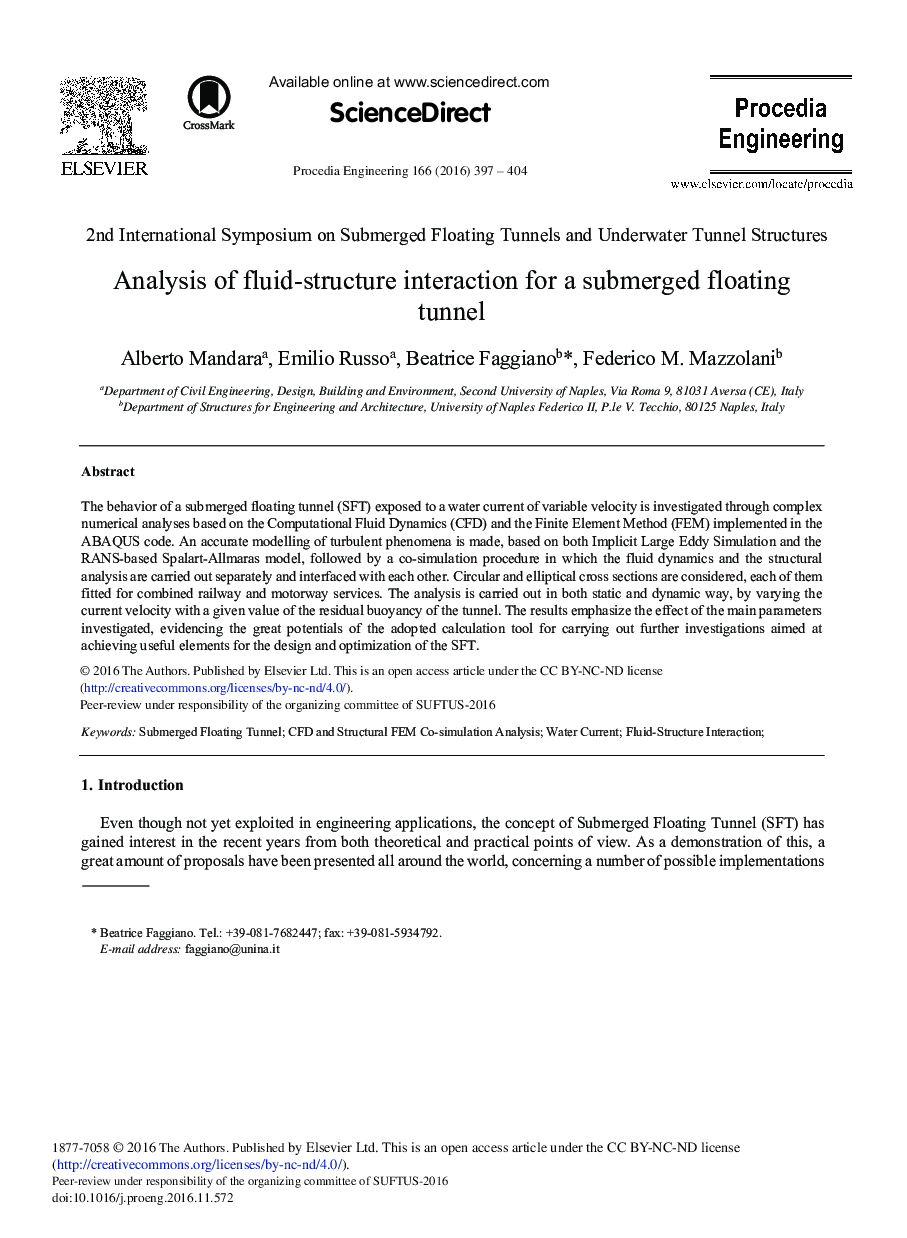| Article ID | Journal | Published Year | Pages | File Type |
|---|---|---|---|---|
| 5029296 | Procedia Engineering | 2016 | 8 Pages |
Abstract
The behavior of a submerged floating tunnel (SFT) exposed to a water current of variable velocity is investigated through complex numerical analyses based on the Computational Fluid Dynamics (CFD) and the Finite Element Method (FEM) implemented in the ABAQUS code. An accurate modelling of turbulent phenomena is made, based on both Implicit Large Eddy Simulation and the RANS-based Spalart-Allmaras model, followed by a co-simulation procedure in which the fluid dynamics and the structural analysis are carried out separately and interfaced with each other. Circular and elliptical cross sections are considered, each of them fitted for combined railway and motorway services. The analysis is carried out in both static and dynamic way, by varying the current velocity with a given value of the residual buoyancy of the tunnel. The results emphasize the effect of the main parameters investigated, evidencing the great potentials of the adopted calculation tool for carrying out further investigations aimed at achieving useful elements for the design and optimization of the SFT.
Related Topics
Physical Sciences and Engineering
Engineering
Engineering (General)
Authors
Alberto Mandara, Emilio Russo, Beatrice Faggiano, Federico M. Mazzolani,
